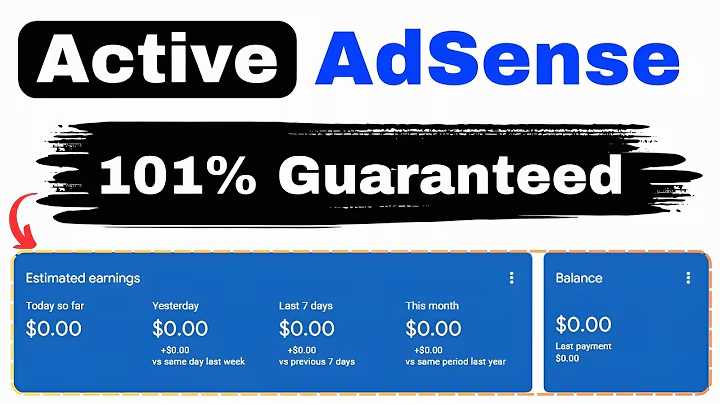
Maximizing Ad Revenue with AdsClap and GAM
Maximizing Ad Revenue with AdsClap and GAM: A Comprehensive Guide
Introduction
In today’s digital landscape, publishers and website owners are constantly looking for ways to maximize their ad revenue while maintaining a seamless user experience. Two powerful tools that can help achieve this are AdsClap and GAM.
This article will explore how these platforms work, their benefits, and how publishers can leverage them to optimize ad revenue. We’ll also discuss best practices for ad management, header bidding, and programmatic advertising.
Table of Contents
- What is AdsClap?
- What is Google Ad Manager?
- Why Use AdsClap and GAM?
- Setting Up Google Ad Manager with AdsClap
- Header Bidding and Programmatic Advertising
- Best Practices for Ad Revenue Optimization
- Common Challenges and Solutions
- Future Trends in Ad Monetization
- Conclusion
1. What is AdsClap and GAM?
AdsClap is a monetization platform designed to help publishers maximize their ad revenue through header bidding, ad mediation, and programmatic advertising. It connects multiple demand partners (ad networks, DSPs, and exchanges) to compete for ad inventory in real time, ensuring higher CPMs (Cost Per Mille) and fill rates.
Key Features of AdsClap:
- Header Bidding Integration – Allows multiple demand partners to bid simultaneously.
- Ad Mediation – Balances demand sources to optimize revenue.
- Real-Time Bidding (RTB) – Ensures the highest-paying ads are displayed.
- User-Friendly Dashboard – Provides analytics and performance insights.
- Multiple Ad Formats – Supports display, video, native, and interstitial ads.
AdsClap is particularly useful for publishers who want to reduce dependency on Google AdSense and explore additional revenue streams.
2. What is Google Ad Manager?
Google Ad Manager (GAM) is an ad serving platform by Google that helps publishers manage, sell, and optimize their ad inventory. It combines the features of the former DoubleClick for Publishers (DFP) and Ad Exchange, offering a comprehensive solution for direct and programmatic ad sales.
Key Features of Google Ad Manager:
- Unified Auction – Combines direct and programmatic demand in a single auction.
- Yield Management – Optimizes ad delivery for maximum revenue.
- Advanced Targeting – Allows audience segmentation for better ad performance.
- Cross-Platform Support – Works with web, mobile, and video ads.
- Reporting & Analytics – Provides detailed insights into ad performance.
GAM is widely used by large publishers, media companies, and ad networks due to its scalability and integration with Google’s ecosystem.
3. Why Use AdsClap and GAM?
While Google Ad Manager is powerful on its own, integrating AdsClap can further enhance revenue by:
1. Increasing Competition with Header Bidding
- GAM’s Open Bidding (formerly EBDA) competes with AdsClap’s header bidding, driving up CPMs.
- More demand sources mean higher fill rates and better monetization.
2. Reducing Reliance on Google’s Demand
- Diversifying demand partners reduces risk if Google’s fill rates drop.
- AdsClap brings in additional SSPs (Supply-Side Platforms) and DSPs (Demand-Side Platforms).
3. Improving Latency & User Experience
- AdsClap’s optimized header bidding setup minimizes page load delays.
- Faster ad loading improves SEO and user retention.
4. Accessing Premium Demand Partners
- AdsClap integrates with high-paying networks beyond Google’s ecosystem.
- Publishers can tap into global advertisers for better rates.
4. Setting Up AdsClap and GAM
Step 1: Sign Up for AdsClap
- Register at AdsClap’s website.
- Get approved as a publisher.
Step 2: Integrate AdsClap Header Bidding
- Add the AdsClap JavaScript code to your website header.
- Configure ad units and demand partners.
Step 3: Set Up AdsClap and Google Ad Manager
- Create ad units in GAM.
- Enable Open Bidding to allow multiple demand sources to compete.
Step 4: Implement Ad Tags
- Generate GAM ad tags and place them on your site.
- Ensure AdsClap’s wrapper is calling GAM for unified auctions.
Step 5: Test & Optimize
- Use Google Ad Manager’s GPT (Google Publisher Tag) for testing.
- Monitor performance in both AdsClap and GAM dashboards.
5. Header Bidding and Programmatic Advertising
What is Header Bidding?
Header bidding allows multiple ad exchanges to bid on inventory before the ad server (GAM) makes a decision. This increases competition and revenue.
How AdsClap Enhances Header Bidding:
- Prebid.js Integration – Works with GAM’s header bidding setup.
- Dynamic Floor Pricing – Adjusts minimum CPMs based on demand.
- Multi-Format Support – Handles display, video, and native ads.
Programmatic Advertising with AdsClap and GAM
- Open Auction – GAM’s real-time bidding (RTB) for automated sales.
- Private Marketplaces (PMPs) – Premium deals with selected advertisers.
- Programmatic Guaranteed – Fixed-price, reserved inventory deals.
Combining AdsClap’s demand partners with GAM’s programmatic features maximizes revenue potential.
6. Best Practices for Ad Revenue Optimization
1. Balance Ad Density & User Experience
- Avoid excessive ads that hurt page speed and UX.
- Follow Better Ads Standards to prevent ad-blocking triggers.
2. Use Smart Ad Refresh
- Implement controlled ad refresh to boost impressions without annoying users.
3. Leverage Data-Driven Targeting
- Use Google Ad Manager’s audience segmentation.
- Combine first-party data with AdsClap’s demand insights.
4. Optimize for Mobile & AMP
- Ensure fast-loading ads on mobile devices.
- Use Google AMP (Accelerated Mobile Pages) for better performance.
5. A/B Test Ad Placements
- Experiment with sticky ads, in-content ads, and interstitials.
- Use GAM’s experiment feature to compare performance.
7. Common Challenges and Solutions
| Challenge | Solution |
|---|---|
| Low Fill Rates | Add more demand partners via AdsClap. |
| High Latency | Optimize header bidding setup & lazy load ads. |
| Ad Blocking | Use non-intrusive formats & comply with COPPA/GDPR. |
| Revenue Drops | Diversify demand beyond Google with AdsClap. |
| Ad Fraud | Implement Google’s Ad Traffic Quality (ATQ) solutions. |
8. Future Trends in Ad Monetization
- AI-Powered Optimization – Machine learning for dynamic pricing.
- Connected TV (CTV) & OTT Ads – Expanding beyond desktop/mobile.
- Privacy-First Advertising – Adapting to cookie-less tracking (FLoC, Topics API).
- Blockchain in Ad Tech – Transparency in programmatic transactions.
Publishers who stay ahead of these trends will have a competitive edge.
9. Conclusion
Combining AdsClap and Google Ad Manager provides publishers with a powerful monetization strategy. By leveraging header bidding, programmatic demand, and smart ad optimization, publishers can significantly increase revenue while maintaining a positive user experience.
To get started:
- Integrate AdsClap’s header bidding with your website.
- Set up Google Ad Manager for unified auctions.
- Continuously test and optimize ad placements and demand sources.
With the right approach, publishers can unlock higher CPMs, better fill rates, and sustainable ad revenue growth.
Final Thoughts
The digital advertising landscape is evolving rapidly, and tools like AdsClap and Google Ad Manager are essential for staying competitive. By adopting best practices and staying updated with industry trends, publishers can maximize their earnings while delivering value to advertisers and users alike.
Would you like a more detailed guide on any specific aspect? Let me know in the comments! 🚀

AdsClap and GAM






